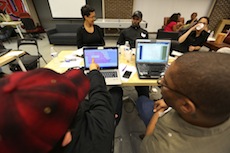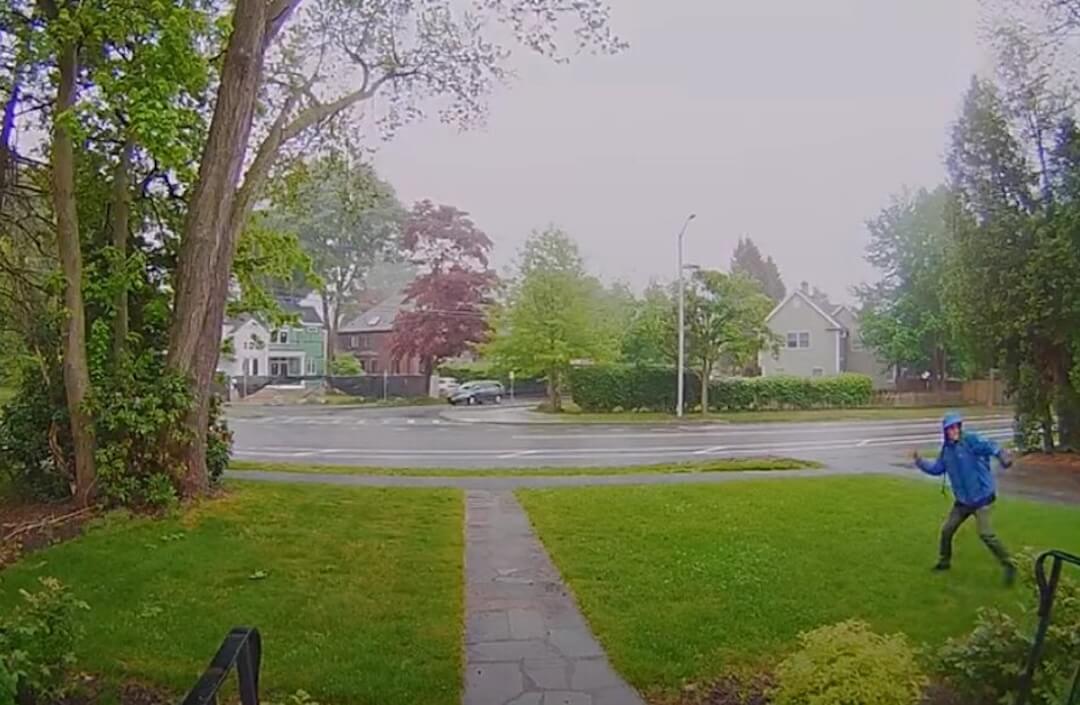Immigration stories usually have numbers. But immigration numbers have stories of their own. Many journalists work with these numbers — they gather them, use them and report them. But while the numbers get told, the stories behind them often don’t.
“Most of the time we just report the numbers, but we don’t interview the numbers,” Migrahack creator Claudia Nunez said in a phone interview. “They have a lot of information for us.”
Migrahack is an effort to teach journalists to take those numbers and find the stories inside. Usually, journalists cite a statistic and drill down to an individual story, said Lauren Pabst, a program officer with the John D. and Catherine T. MacArthur Foundation, by phone. (The MacArthur Foundation has supported Migrahack with a $100,000 grant.) But data and how you compare it can say different things. Migrahacks give participants tools and skills to think deeply about the numbers they’re using, Pabst said, and interrogate those numbers to see what’s really happening.
Migrahack takes the collaborative culture of hackathons and applies it to the difficult work of making sense of immigration data. And it does so with three distinct groups — journalists, programmers and community members, usually drawn from community non-profits. Participants gather for an intense few days to look at an already prepared set of immigration data and, together, figure out what they might do with it.
Nunez created Migrahack in 2012 after experiencing hackathons at Stanford, where she was a Knight fellow, that were mostly filled with white male programmers. Nunez, a third-generation Mexican journalist, wanted to bring communities of color and journalists together with the tech people and see what might happen. L.A. Migrahack ran in 2012, with some funding from the Institute for Justice & Journalism. (Migrahacks are now a project of IJJ.) Chicago Migrahack followed this year, and Mexico City is scheduled for spring 2014.
“I think Migrahack shows that we don’t have to be in silos,” Phuong Ly, executive director of the Institute for Journalism and Justice and also a former Knight fellow, said in a phone interview.
“It’s, ‘let’s work together, let’s learn from each other,'” said Nunez, now Migrahack director for IJJ. “It’s a collaboration mentality.”
Engaging with data
When Fernando Diaz signed up for Chicago Migrahack, he felt pretty good about the whole thing. Hoy, a Spanish-language newspaper in Chicago, was an event partner, and Diaz, the paper’s managing editor, thought supporting Migrahack was worthwhile and would do some good.
“What I actually saw was the fact that it is a super-charged environment to test and validate ideas and products and technology,” he said in a phone interview.
It got his staff out of the newsroom, where they often work in isolation, to hear from people in the community. And it showed Diaz what else could be done with data.
“We get data,” Diaz said. “We get FOIA. But this is a whole other level.”
During Chicago Migrahack, the group looked at detention numbers and created an interactive map showing how undocumented people in detention are moved around the country, often several times in just a few months.
After Chicago Migrahack, Diaz realized there was huge potential to do more with that data than just report it. One project, which Diaz hopes to complete in the first six months of the new year, takes the case numbers of people in detention with Immigration and Customs Enforcement and asks them to identify themselves and report where they are now, essentially “de-anonymizing what is a very anonymous system,” he said.
As Diaz sees it, Migrahack Chicago worked because it took an approach that can often be intimidating for journalists and brought those journalists together with people who had other strengths. Together, they mapped numbers, made them visual, and showed another layer to a complicated topic that often gets oversimplified.
“How is that not useful for reporters when so much of the raw data in our reporting turns into a sentence?” he asked.
Migrahack Mexico
MacArthur’s money will bring Migrahack to Mexico this spring, and introduce a web effort that goes beyond creating a digital outpost for the event itself.
“After L.A. and Chicago Migrahacks, people wanted something beyond the event,” Ly said.
The planned hub is an effort to keep the momentum started at Migrahacks going. In-person events are best, Ly said, but people also need a place to go after the event ends and a place to find data. Part of the grant money supporting Migrahack will go to building tutorials in Spanish and English and finding the best way to build that hub.
In Mexico this spring, Migrahack will work with Mexican journalists, programmers and nonprofits from around the country, offering fellowships to 20 people.
“There is a big need for training,” Nunez said, “Especially on data journalism and the connection between Mexico and the U.S.”
Mexico City’s Migrahack will be conducted in Spanish and English, giving journalists there the chance to learn in their own language. The biggest challenge, Nunez said, will be just accessing government data, which isn’t as readily available as it is in the U.S.
Part of what she hopes Mexico Migrahack will do, though, is help the people involved learn to push harder for more open data.
“When you learn the power of access to public information, then you’re going to start requesting that and push your government to give you the data,” Nunez said.
The Migrahack Model
This February, Hoy will produce a Migrahack-like event of its own, Diaz said, hosting a hackathon in a Puerto Rican neighborhood in Chicago that will focus on education.
Migrahack’s work is important, he said, “but I think the model is even more important.”
Part of that model is taking Migrahack into specific communities, Pabst said. Each community has different immigration populations and different issues. Migrahacks can help people work with the data where they live, she said, and that’s beneficial to nonprofits, journalists and programmers.
But such efforts don’t just have to be about immigration, Diaz said: Bring together a journalist, a community member and a programmer and think about what they could do with a topic and the data available — immigration, crime, the economy, education, employment.
Diaz gets data. He gets FOIA. And now he also gets the power of working with people who can help journalists do more with numbers than simply report them.
Disclosure: Kristen Hare was a Institute for Justice and Journalism fellow in the spring of 2012. At that time, Phuong Ly was a senior fellow.









